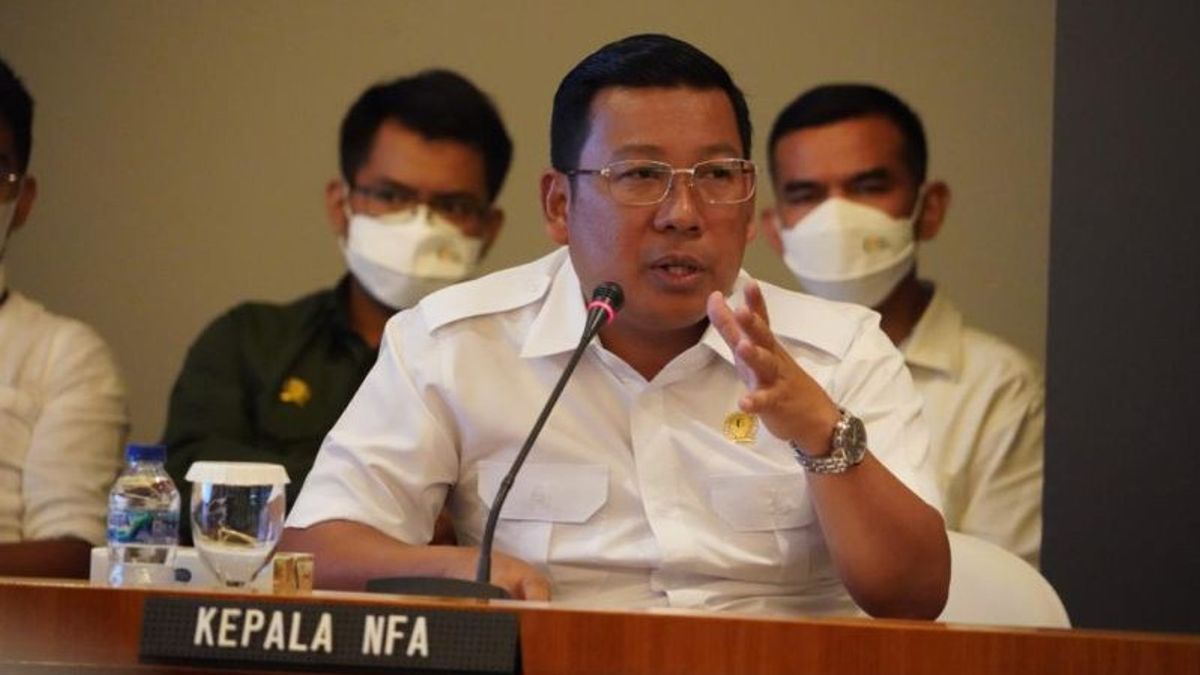JAKARTA - The National Food Agency (NFA) is targeting a number of areas with sufficient rice production, in order to increase the government's rice reserve stock (CBP).
This step was taken as an effort to control inflation, given the large contribution of rice to the inflation rate.
Head of the National Food Agency Arief Prasetyo Adi said that until now the food commodities that have contributed the most to increasing inflation are rice.
"The commodity of rice is the highest contributor to national food inflation, this needs to be a common concern for the Central and Regional Governments because the trend of increasing rice prices has occurred since July 2022," he said, in Jakarta, Tuesday, October 25.
Arief said, based on data from the Central Statistics Agency (BPS) and the Coordinating Ministry for the Economy until the 3rd week of October 2022, rice commodities contributed 4 percent to national inflation.
For this reason, the Food Agency continues to encourage increased CBP through rice absorption by Perum Bulog at rice producer centers. One of the provinces that is the main focus of absorption is South Sulawesi (Sulsel).
Arief explained that South Sulawesi is one of the provinces in Indonesia with the highest rice production nationally.
South Sulawesi's harvest potential in October 2022 was 264,000 tons and in November 2022 it was 183,000 tons. "South Sulawesi has the potential as an absorption center to increase BULOG's CBP which is targeted at 1.2 million tons by December 2022," he said. According to Arief, it is important to ensure adequate CBP availability, considering that it can become one of the rice price control instruments so that it is hoped that these commodities will no longer burden inflation rates. "CBP can be optimized to meet the needs of the supply availability and price stabilization program (KPSH) or market operations to reduce inflation, anticipate emergency response, and allocation for other urgent needs," he said.
For this reason, Arief appreciates the provinces that are the centers for rice production. Apart from South Sulawesi, a number of provinces also have high harvest potential until November this year, such as West Java having the potential to harvest 398,000 tons of rice, Central Java 335,000 tons, and East Java 366,000 tons.
Furthermore, he explained, efforts to maintain rice price stability to suppress inflation must also be supported by collaboration between local governments and business actors.
He gave an example, the rice price stabilization collaboration in DKI Jakarta conducted by the Provincial Government (Pemprov) of DKI Jakarta with the BUMD food station and the Rice Main Market.
"It is important for rice producing regions to ensure the offtake of crops by local business actors so that regional stocks are adequate so that they can be intervened if prices rise. Therefore, I suggest that each province has a BUMD that is engaged in the food sector, if it does not have it, it can optimize the role of Bulog," he said.
In addition to the collaboration between local governments and business actors, rice price stability also needs to be supported by cooperation between local governments.
He appealed to each region to have a political will to distribute excess food stocks to other regions to help reduce price disparities.
"The Food Agency has done so this month, in collaboration with the Ministry of Transportation, the Ministry of Trade, and West Java Province by sending 200 tons of rice to Aceh from Patimban Port, Subang, via the Sea Toll Road," he explained.
Collaboration in order to reduce inflation is in line with the direction of Indonesian President Joko Widodo, who said that the handling of inflation must be carried out jointly between the center and the regions.
Meanwhile, based on BPS data and the Coordinating Ministry for the Economy processed by the Food Agency, in September 2022, rice contributed 4 percent to inflation, while other food commodities contributed 1 percent to -6 percent.
Arief appealed to the public to diversify basic foods by consuming other sources of carbohydrates as a substitute for rice. The goal is to reduce dependence on rice.
"Consumption of diverse foods can reduce dependence on rice, thereby reducing the high demand for the commodity," he said.
On the same occasion, Minister of Home Affairs Tito Karnavian said, in the future the Ministry of Home Affairs together with relevant ministries and institutions will conduct weekly monitoring of inflation in the regions at both the provincial and district/city levels.
Tito also asked regions to play an active role in carrying out various inflation control actions through monitoring commodity developments and intervening as needed.
Meanwhile, Head of the Central Statistics Agency Margo Yuwono underlined two important things to do to reduce inflation.
First, stabilizing prices and reducing price disparities between regions due to supply inequality, production center gaps, and distribution bottlenecks.
The English, Chinese, Japanese, Arabic, and French versions are automatically generated by the AI. So there may still be inaccuracies in translating, please always see Indonesian as our main language. (system supported by DigitalSiber.id)








